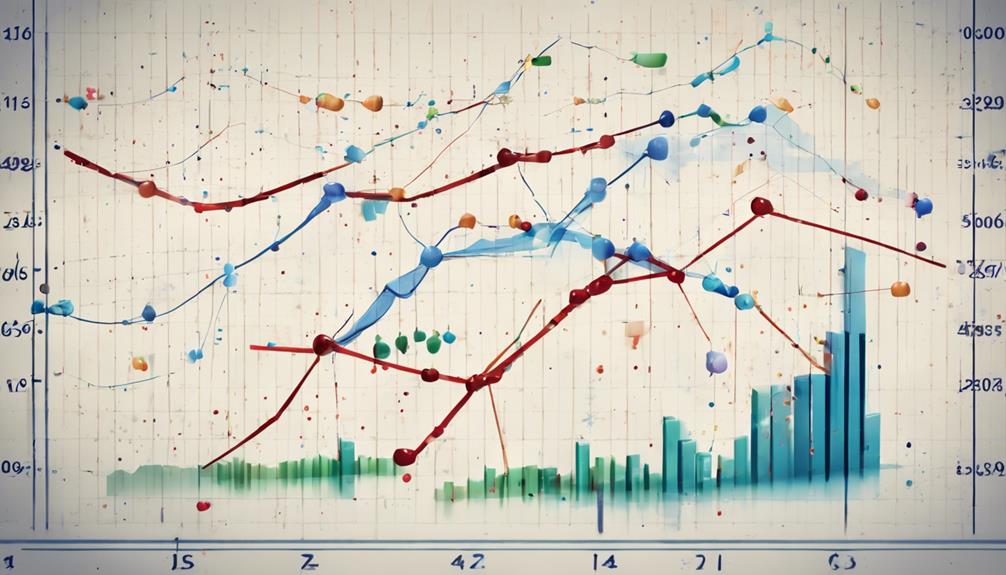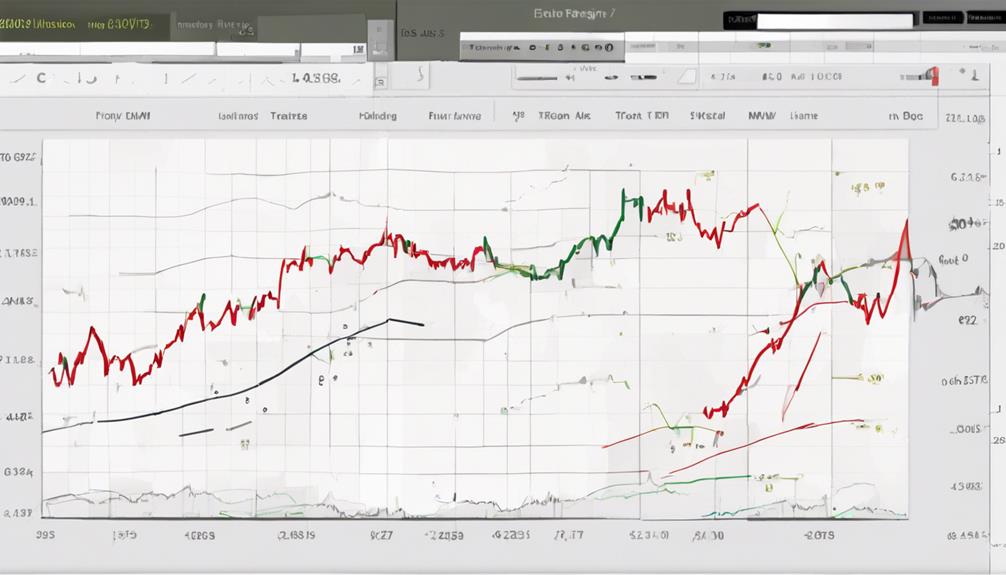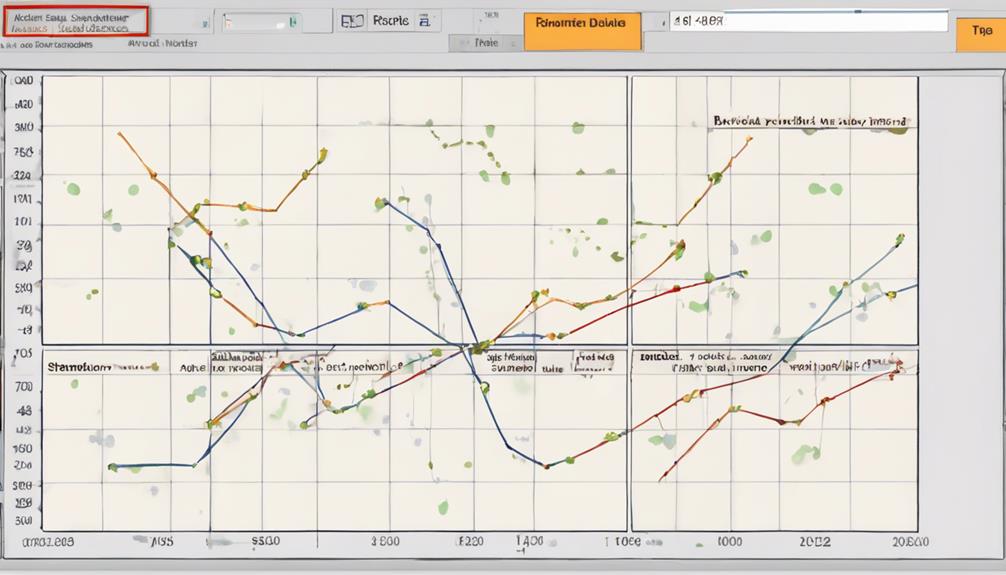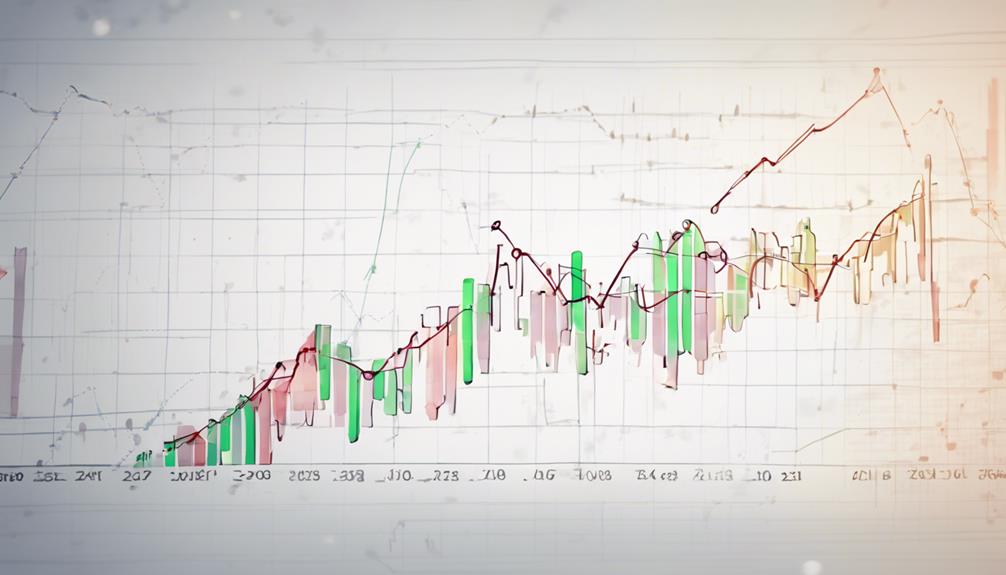In the realm of market analysis, the standard deviation calculation serves as a critical tool for evaluating investment risk and volatility.
This statistical method provides valuable insights into the unpredictability of market movements by measuring how prices deviate from their mean.
Understanding the nuances of standard deviation is essential for investors seeking to make informed and strategic decisions in a dynamic financial landscape.
By delving into the intricacies of this calculation, one can gain a deeper appreciation for its role in assessing market dynamics and optimizing investment portfolios.
Understanding Standard Deviation Calculation
When analyzing market data, a fundamental aspect to grasp is the methodical process of determining standard deviation through precise mathematical calculations. In the realm of stocks, standard deviation plays a crucial role in assessing volatility. One key step in understanding standard deviation is calculating the mean, which involves finding the average of a set of data points. Deviations from this mean are then computed for each data point, highlighting how far each value varies from the average. By squaring these deviations, a standardized measure is obtained, enabling easier comparison of volatility across different stocks or assets.
Summing the squared deviations and dividing by the number of data points results in the variance, which provides insight into the overall dispersion of data points. Finally, taking the square root of the variance yields the standard deviation, a metric widely used in market analysis to gauge the level of volatility present within a stock or asset. Mastering the calculation of standard deviation is essential for investors and analysts seeking to make informed decisions based on thorough quantitative analysis.
Importance of Market Analysis

Market analysis is a vital tool for investors seeking to grasp trends, risks, and opportunities present in financial markets. It involves examining price movements, volume changes, and investor sentiment to make informed decisions.
One essential aspect of market analysis is measuring volatility, which is where tools like standard deviation come into play. Standard deviation calculation in market analysis provides insights into the level of volatility in a particular market, helping investors understand the potential price movements and associated risks.
By utilizing standard deviation, investors can optimize their trading strategies and risk management techniques. This statistical measure allows investors to quantify the dispersion of data points from the average, indicating the market's stability or instability.
Understanding volatility through standard deviation is crucial for making well-informed decisions and navigating the complexities of financial markets effectively. In essence, market analysis and the use of standard deviation are indispensable for investors looking to succeed in the dynamic world of trading.
Applying Standard Deviation in Trading

Utilizing standard deviation in trading provides valuable insights into historical volatility and market momentum, aiding traders in making informed decisions regarding risk management and entry/exit points. Traders rely on standard deviation to assess risk versus return, helping them set appropriate stop-loss and take-profit orders. Here are key points highlighting the significance of standard deviation in trading:
- Measuring Volatility: Standard deviation assists traders in quantifying the level of price fluctuations in a particular asset, enabling them to gauge the potential risks involved accurately.
- Enhancing Diversification: By utilizing standard deviation, traders can evaluate the correlation between different assets within their portfolios, leading to a more diversified and balanced investment strategy.
- Identifying Market Momentum: Standard deviation serves as a crucial tool for recognizing market trends and momentum shifts, aiding traders in adapting their strategies accordingly.
- Determining Entry and Exit Points: Traders use standard deviation to pinpoint optimal entry and exit levels, enhancing the precision of their trading decisions.
- Statistical Measure of Price Volatility: Standard deviation plays a pivotal role in risk management by providing traders with a statistical measure of price volatility, assisting in the development of effective risk mitigation strategies.
Market Risk Assessment Techniques

Implementing quantitative risk assessment methods is essential in evaluating market risks and potential price fluctuations. Market risk assessment techniques heavily rely on standard deviation to measure price volatility.
Standard deviation, a statistical measure, assists investors in understanding the spread of asset prices around the average in market analysis. By calculating standard deviation, analysts can assess market risk and predict potential price movements.
Moreover, comprehending standard deviation is crucial for determining the level of uncertainty and variability present in market data. Market analysis techniques incorporate standard deviation to make informed decisions based on individual risk tolerance levels.
Standard Deviation for Investment Evaluation

Assessing investment risk through standard deviation is a fundamental practice in evaluating the volatility of assets. Standard deviation quantifies the degree of dispersion of asset prices around their mean in investment evaluation. This measure of volatility provides crucial insights into the potential risks associated with a particular investment.
To effectively understand the significance of standard deviation in investment evaluation, consider the following points:
- Standard deviation helps investors to gauge the level of risk associated with an investment.
- Higher standard deviation values indicate investments with greater price fluctuations and higher risk levels.
- Lower standard deviation values suggest investments that are more stable with lower risk levels.
- Investors can use standard deviation to compare the volatility of different investment options before making decisions.
- Understanding standard deviation is essential for making informed investment choices and effectively managing risk in a portfolio.
How Can Standard Deviation be Utilized in Market Analysis?
Standard deviation illuminates market analysis with standard deviation by providing insights into the volatility and risk of financial instruments. It helps investors understand the potential fluctuations in market prices, allowing them to make more informed decisions. Incorporating standard deviation into market analysis can lead to a more comprehensive understanding of market trends.
Frequently Asked Questions
What Is the Standard Deviation in Market Analysis?
Standard deviation in market analysis quantifies price volatility, aiding in risk assessment and understanding market variability. It measures the spread of data points around the mean, supporting informed decision-making by analysts.
What Is the Formula for Standard Deviation in Marketing?
The formula for standard deviation in marketing involves assessing data dispersion around the mean. Understanding this formula aids in evaluating variability and risk in marketing metrics. It requires finding the square root of the variance.
How Do You Calculate Standard Deviation in Analysis?
Calculating standard deviation in analysis involves measuring data variability. By finding the mean, calculating deviations, summing squared deviations, and deriving the variance, we gauge the dispersion of data points. The square root of the variance yields the standard deviation.
How Do You Calculate Market Deviation?
Market deviation is calculated by determining the average price, finding differences from the average for each data point, squaring these differences, summing them, and dividing by the number of data points to obtain the variance.
Conclusion
In conclusion, the standard deviation calculation is a crucial statistical method in market analysis for assessing investment risk and volatility. By understanding how prices deviate from their average, investors can make more informed decisions.
Interestingly, a study found that in the S&P 500 index, the average annual standard deviation over the past 90 years was around 20%. This highlights the importance of using standard deviation for evaluating market dynamics and managing risk effectively.
